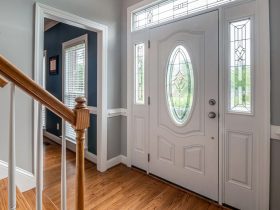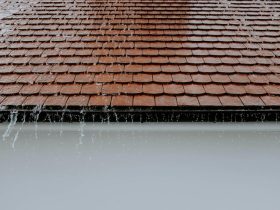Your roof should have layers, just as long underwear underneath a shirt or jacket. You don’t just put shingles on your roof and call it good. In roofing, there are multiple layers of protection that combine to keep you safe, warm, and dry. Here are the essential facts:
Roofing Layer 1: Insulation
A layer of insulation is placed between your attic roof and your roof. This helps keep the outside air out while allowing the inside air to circulate. Insulation is essential for energy efficiency. It’s kind of like wearing long underwear.
Roofing Layer 2: Ventilation
Proper ventilation is essential for warm, humid air to escape from your attic. It doesn’t interfere with airflow and invites mold into your home. This layer is essential for air circulation, temperature regulation, and humidity control. It will also help to keep mildew and energy costs down.
Roofing Layer 3: Framing
This foundation is what supports your roof’s weight. It is made up of triangular support trusses that give your roof its shape.
Roofing Layer 4: Roof Deck
The roof deck, also known as sheathing or plywood, is usually made from plywood. It is placed over the framing to connect the joints and trusses.
Roofing Layer 5: Water Shield
The roof deck is protected from water damage by the melting snow or driving rain. It acts as a rain jacket on your roof.
Roofing Layer 6: Underlayment
The deck and shingles are protected by an additional layer of water resistance called underlayment. It protects the deck from potential damage and prevents water from entering under the shingles. It is like wearing a raincoat orusing an umbrella.
Roofing Layer 7: Starter Strip
The roof’s edge is sealed with shingles. This seals the roof against storms and strong winds.
Roofing Layer 8: Shingles
Now you are ready to install the shingles. The final layer of your roof provides more than a beautiful face for curb appeal. Shingles offer protection from the sun, rain, fire, and other weather conditions. Shingles are like a fancy coat, but they also keep you warm and comfortable.
Roofing Layer 9: Flashing
It’s a kind of layer. Although flashing does not cover the entire roof, it provides an extra layer of protection in specific areas. Flashing acts as an effective water seal around chimneys and vents, skylights valleys, eaves, and roof intersections.
There you have it. There are many layers to a roof. Who would have thought? We did, as we have over 30 years of roofing experience! This is important because it’s essential for every layer of a roof to be properly in order to provide you with the best and longest-lasting protection.
This post was written by Reggie Reed! Reggie is a state-certified roofing contractor and co-owner of Reggie Reed Roofing, the best Roofing Companies in Pinellas County. He is a 4th generation roofing contractor. RR Roofing offers a wide variety of roofing services for residential homes, apartment complexes, condos, commercial buildings, churches, and more. Reggie enjoys dedicating his spare time to helping underprivileged youth in his community and traveling with his family and friends.










Leave a Reply